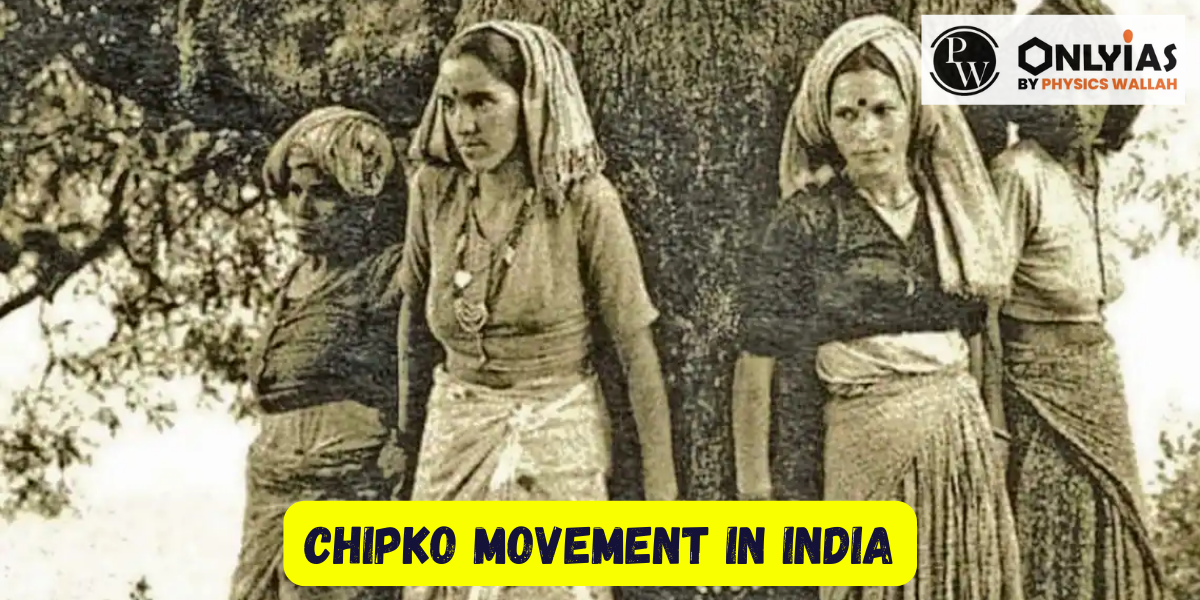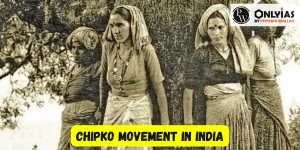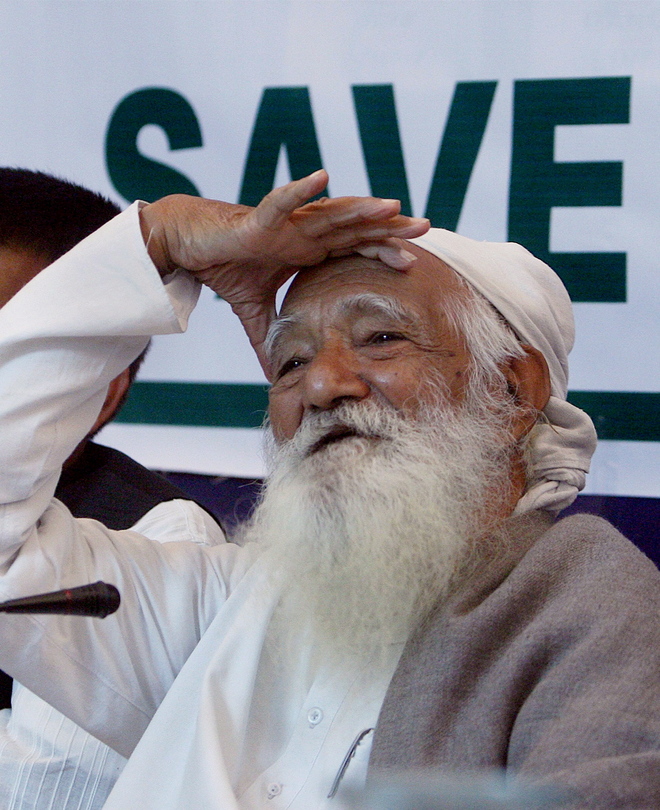![]() Madhavi Gaur
Madhavi Gaur
![]() August 10, 2023 01:49
August 10, 2023 01:49
![]() 5609
5609
![]() 0
0

The Chipko Movement, an iconic environmental conservation movement that took root in the Himalayan region of India, has etched its name in history as a prime example of grassroots activism for ecological protection. Emerging from the heart of rural communities, the movement resonated with a powerful message of environmental stewardship and sustainable development. This article delves into the meaning, causes, leaders, impact, and fascinating facts surrounding the Chipko Movement.

The term “Chipko” translates to “embrace” or “hug” in Hindi, symbolizing the core principle of the movement – the act of embracing trees to safeguard them from being felled. The movement entailed villagers, predominantly women, wrapping their arms around trees slated for logging, thereby obstructing the efforts of commercial loggers.
The Chipko Movement emerged as a response to rampant deforestation and the degradation of natural resources in the Himalayan region. The devastating consequences of large-scale logging, including soil erosion, loss of biodiversity, and adverse effects on local livelihoods, prompted the villagers to rise against the exploitation of their cherished natural heritage.
The Chipko Movement was a renowned environmental movement that originated in the Himalayan region of India, specifically in the state of Uttarakhand (formerly part of Uttar Pradesh). The movement gained prominence during the 1970s and 1980s and was centered around the protection of forests and the sustainable use of natural resources. It was characterized by its unique strategy of hugging trees to prevent them from being felled.
While the movement was a collective effort with the participation of numerous local people, particularly women, there were several individuals who played significant roles in leading and organizing the movement. Some of the prominent leaders of the Chipko Movement include:
1. Sunderlal Bahuguna: Sunderlal Bahuguna is often considered the main leader and spokesperson of the Chipko Movement. He was an environmental activist and a Gandhian who championed the cause of forest conservation and sustainable development. Bahuguna’s persuasive communication skills and dedication to the movement greatly contributed to its success. He was known for his fasts and protests to raise awareness about the importance of protecting the environment.

2. Chandi Prasad Bhatt: Chandi Prasad Bhatt was another key figure in the Chipko Movement. He was instrumental in organizing local communities, particularly women, to participate in the movement. Bhatt played a crucial role in spreading the message of nonviolent resistance and encouraging people to take a stand against deforestation.
3. Gaura Devi: Gaura Devi was a village woman who is often credited with starting the Chipko Movement. In 1973, she led a group of women from her village to hug trees and prevent loggers from felling them. This act of resistance inspired the larger movement and showcased the power of grassroots activism.
4. Bachni Devi: Bachni Devi, like Gaura Devi, was a village woman who actively participated in the Chipko Movement. Her determination and leadership qualities made her a symbol of the movement’s spirit and grassroots strength.
5. Sarala Behn: Sarala Behn, also known as Sarala Behen, was an environmentalist and a follower of Mahatma Gandhi. She played a crucial role in advocating for environmental conservation and encouraging women’s involvement in the Chipko Movement.
These leaders, along with numerous other local activists and villagers, collectively made the Chipko Movement a significant success in raising awareness about environmental issues and advocating for sustainable practices. The movement’s legacy continues to influence environmental activism globally.
The Chipko Movement, also known as the Chipko Andolan, was a significant environmental and social movement that originated in the Himalayan region of India in the 1970s. The movement had a profound impact on both environmental conservation efforts and grassroots activism. Here are some of the key impacts of the Chipko Movement:
1. Environmental Awareness and Conservation: The Chipko Movement played a pivotal role in raising awareness about deforestation, ecological degradation, and the importance of conserving forests. The movement’s participants, primarily local villagers (predominantly women), hugged trees to physically prevent loggers from felling them, drawing attention to the destructive impact of deforestation.
2. Local Empowerment: The movement empowered local communities, particularly women, to take an active role in protecting their natural resources. This grassroots involvement helped shift the power dynamics and gave marginalized groups a voice in decisions related to resource management.
3. Policy Changes: The Chipko Movement contributed to the formulation of policies and regulations related to forest conservation and land use. The protests and public attention forced authorities to acknowledge the importance of sustainable resource management and led to the implementation of measures to protect fragile ecosystems.
4. Inspiration for Similar Movements: The success of the Chipko Movement inspired similar movements and protests not only in India but also in other parts of the world. These movements followed the principle of nonviolent direct action and community involvement to protect the environment and natural resources.
5. Global Environmental Movement: The Chipko Movement became a symbol of the global environmental movement, highlighting the importance of grassroots activism and sustainable practices. It contributed to the growing recognition of environmental issues on a global scale.
6. Recognition of Women’s Role: The participation of women in the Chipko Movement challenged traditional gender roles and brought attention to the crucial role of women in environmental conservation and sustainable development.
7. Economic and Cultural Impact: By advocating for sustainable use of forests, the movement helped preserve traditional livelihoods and cultural practices that were intertwined with the natural environment.
8. Education and Research: The Chipko Movement spurred interest in the fields of environmental science, ecology, and sustainable development. Researchers and scholars have since studied the movement’s impact on policy, society, and the environment.
9. Forest Protection and Regeneration: In some areas where the movement was successful, forests were protected from immediate destruction, allowing them to regenerate over time. This had positive ecological effects, including soil conservation, water retention, and biodiversity preservation.
10. Legacy and Continued Activism: The principles and tactics of the Chipko Movement continue to influence environmental activism and conservation efforts globally. It serves as a reminder of the power of community-based action in addressing environmental challenges.
Overall, the Chipko Movement had a lasting impact on environmental awareness, conservation strategies, and the empowerment of local communities. It demonstrated the potential of grassroots movements to bring about positive change and influenced the trajectory of environmental activism worldwide.
Quit India Movement 1942 Date, Causes, Impact, Outcomes, Comprehensive Study
<div class="new-fform">
</div>

Latest Comments